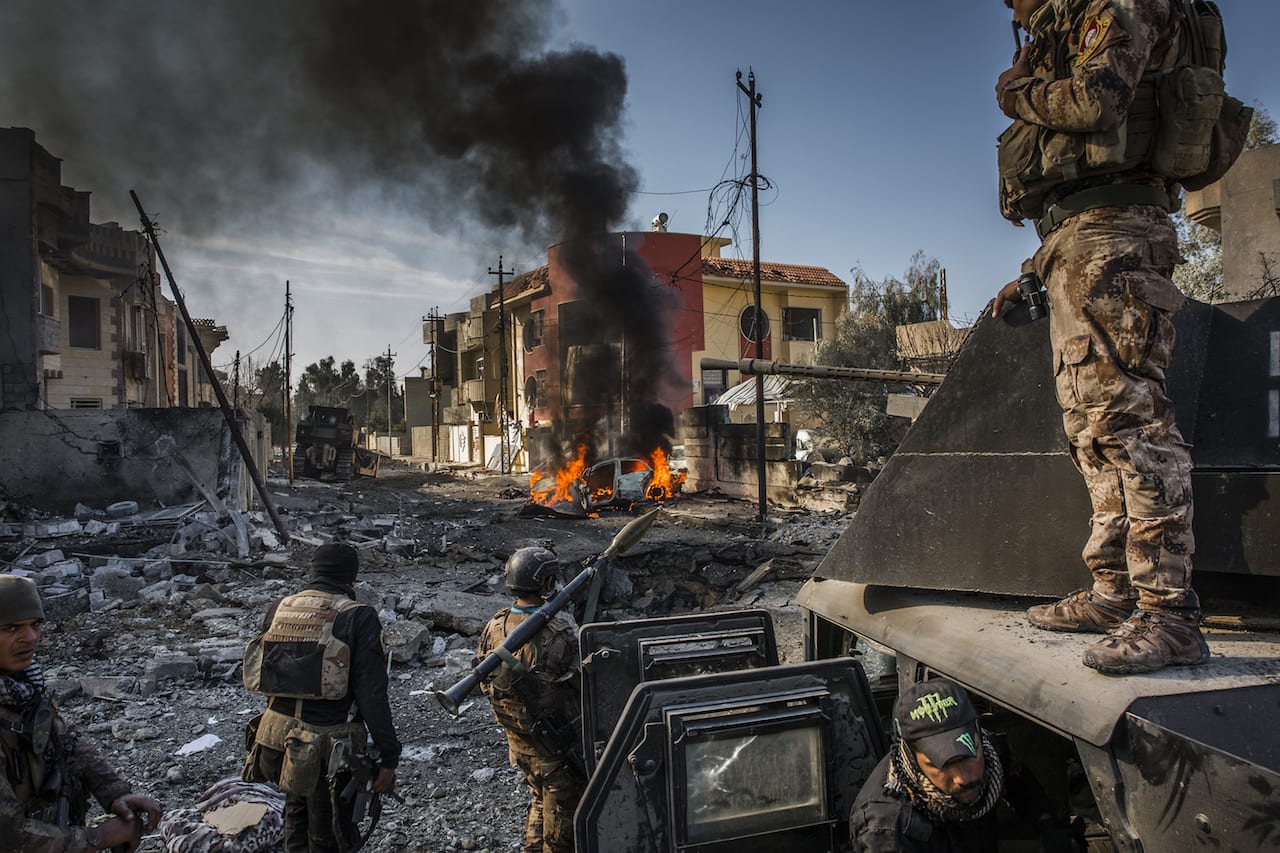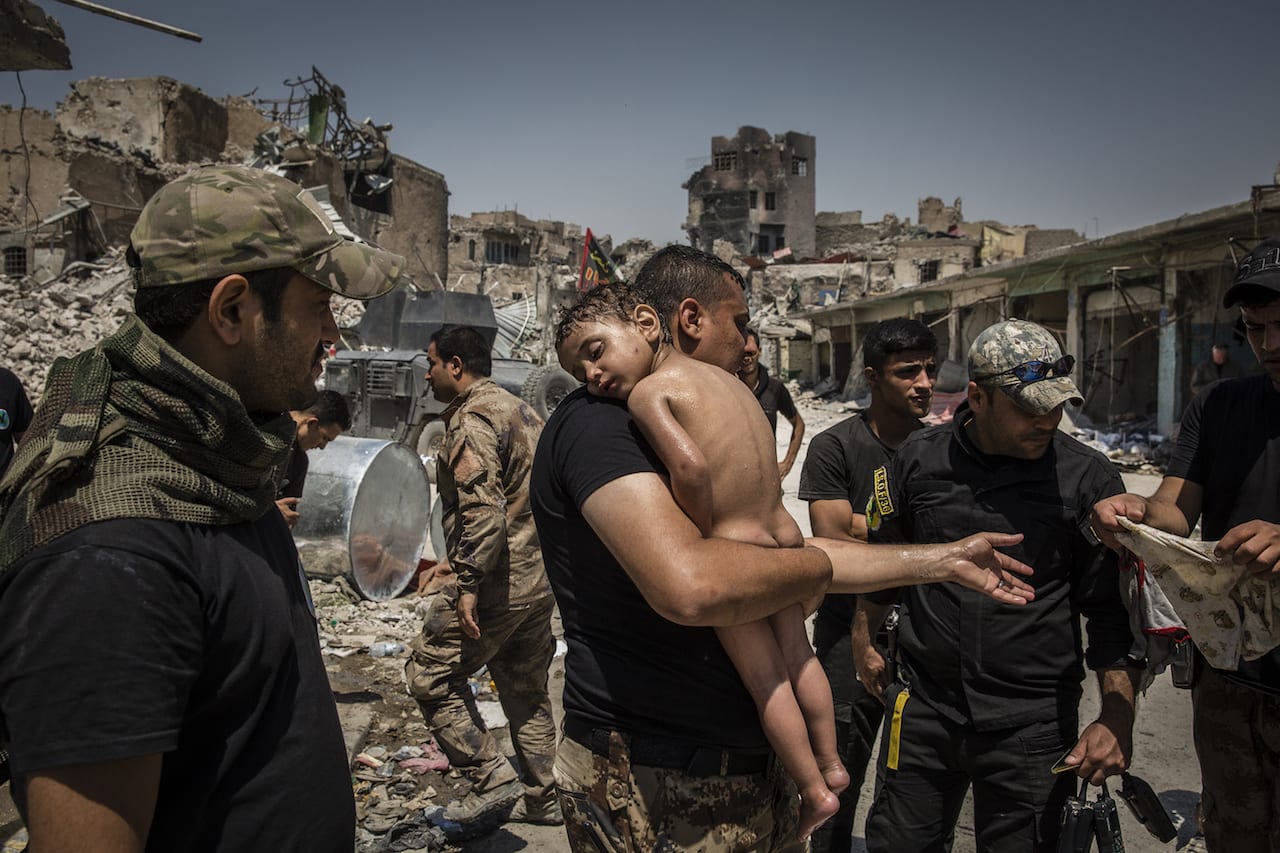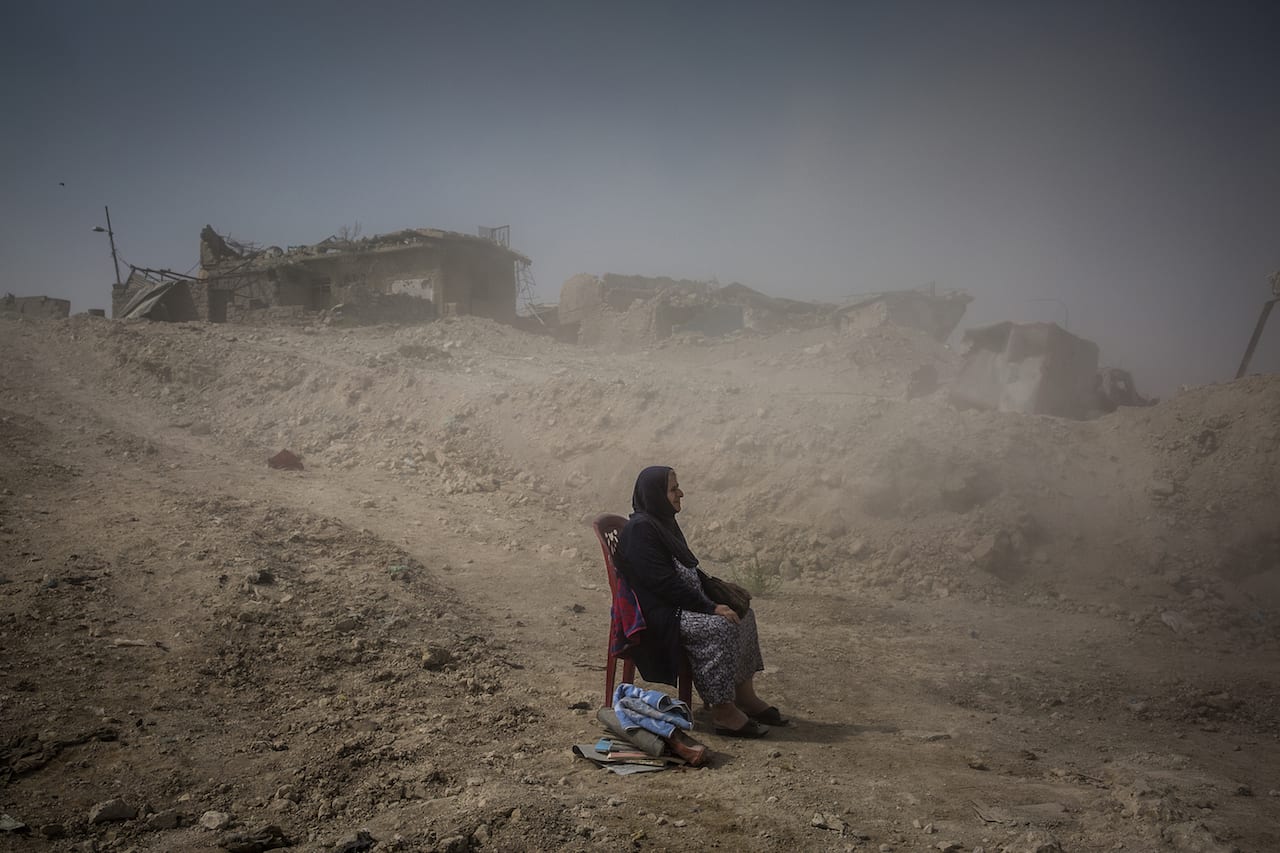“It’s crazy, I can’t believe it,” says Ivor Prickett, of his two nominations for the World Press Photo of the Year award. “Out of a line up of six, to have two images seems insane considering the amount of great work being produced last year. I can’t quite believe it.”
He’s on the phone from Iraq where he’s headed back back to Mosul, the city he’s been photographing for well over a year. Iraq’s second biggest city, Mosul was taken by ISIS militants in June 2014; in October 2016 Iraqi troops began a major offensive to regain the city, the largest military operation since the 2003 invasion of Iraq, and Prickett joined them right away. Originally from Ireland, he’s been based in the Middle East since 2009 and says that “as a reporter in the region, I couldn’t help but cover it”.
“It was always going to be a monumental battle and key in the region, a defining fight,” he says. “There was so much build up, and so much at stake – I definitely wanted to be there and see it.
“The period under ISIS was a bit of a black hole in terms of information and visuals [of the city], so it was fascinating to be able to go and have some insight into what it was like to live under that,” he adds. “It was fascinating and a privilege to cover a story like this, and to cover it all the way through – to try to understand, to find out what went on. It turned into a huge operation [to retake the city], a huge effort, and certainly the most devastating urban warfare I’ve ever witnessed.”

Prickett was embedded with the Iraqi troops but says he was given “pretty unbridled access” and “allowed to do my own thing”. “Once you are there with the right people behind you there’s always a way, and I was lucky to have The New York Times [behind him],” he says. “I was left to my own devices – there was no looking at pictures or censoring, or wanting to see what I’d done. Of course were times when access blocked and I couldn’t get in, but I was pretty lucky.”
Prickett’s story has been shortlisted in the General News Stories category, but the two images pulled out of that story for the World Press Photo of the Year shortlist both focus in on civilians – one showing a line of refugees queuing for aid, the other a naked boy being held by an Iraqi Special Forces fighter. Magdalena Herrera, chair of the World Press jury this year, says the jurors felt they offered a way to speak of what happened in Mosul “in a quiet way”; Prickett says it’s those quiet moments that he’s most attracted to, but also that there was no other way to photograph the story.
“It’s definitely what I try to do with my work – going back through my images, you can see I’m just as comfortable working on long-term projects with refugees in countryside in Croatia as I am on the front lines in Mosul,” he says. “But also there was no way of covering it without showing the local population because even when the fighting was going on, people were caught up in the middle of it.

“Those images are more interesting and poignant than [shots of] someone firing a gun or an explosion,” he adds. “That’s part of it, part of the wider story, but that often says less than, for example, the image of the boy being carried by the soldier. That for me is the perfect blend of the two. It’s in the middle of conflict, you can tell it is in a war zone, but the men have put down their weapons to care for this boy – and his frailty and his body, are these very innocent indicators or symbols of the toll war has on civilians. The civilians caught up in the midst of the fighting, having been trapped in Mosul for years, basically under siege, they’re the most important part of the story.”
And now, while he’s pleased with his double nomination, he’s mostly keen to get back to Mosul to follow up on that narrative. “The aftermath will go on for a while,” he says. “There are still lots of stories to do here.”
www.ivorprickett.co.uk www.worldpressphoto.org


